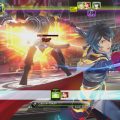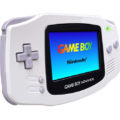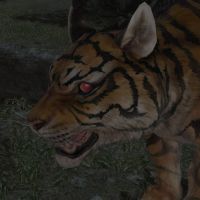Game Boy 30th Anniversary Retrospective: Stuck at Port

April 21 was the 30th anniversary of the Japanese Game Boy release. Just like with any other major anniversary we at Damage Control like to celebrate with a series of retrospectives. To mark the actual day of the 21st (which was also Easter Sunday) Drew celebrated with a livestream of Link’s Awakening DX and a follow up on the 23rd. Geoff has already posted his retrospective along with a quick history of the Game Boy. I suggest reading his wonderful entry first (if you already haven’t). One point of appeal about the Game Boy was indeed its price, especially when compared to handheld competitors.

Growing up, I was raised by a single mother. Having the latest and greatest in video games wasn’t something I experienced. In fact, I missed out on playing a lot of classic games due to being limited to purchasing two games a year, i.e. Christmas and my birthday. The Game Boy provided an inexpensive solution to my gaming demands. I wouldn’t my own Game Boy until late 1993, but it provided me with a way to play the games my friends were experiencing on console. Sure, the experiences weren’t as great given the small screen and monochromatic colors, but as long as I had four AA batteries I could game anywhere. My experience with the handheld vastly improved with a Game Boy Color. (Whoa, color…)
Out of the games I played on the go, these five are my favorites.

Donkey Kong Land | Developer: Rare | Publisher: Nintendo | Release: 1995
Donkey Kong Country was an amazing SNES title. It was developed by Rare and used pre-rendered 3D graphics. Despite not truly being a 3D game, it pulled off the 3D illusion quite well. This side-scrolling platformer was a major departure from previous Donkey Kong games. When my friends were enjoying their adventures SNES, I only got a taste of playing the games when I came to visit them. When I learned of the existence of Donkey Kong Land, a sequel of sorts to its SNES counterpart, I was excited to play. Sure, it wasn’t as glorious as the SNES game, but the graphics still had their pseudo-3D look and the platforming was solid, as it borrowed many of the same elements from DKC. Some differences included only having one Kong on screen at times (instead of both), a more crowded HUD, and a remapping of the controls since the Game Boy has fewer buttons than the SNES.
I played Donkey Kong Land for hours on end, and even invested in the sequels Donkey Kong Land 2 and Donkey Kong Land III. My experiences with these games were just as enjoyable as their console counterparts.

Killer Instinct | Developer: Rare | Publisher: Nintendo, Rareware, Midway | Release: 1995
Killer Instinct is a game I remember well. I had the opportunity to play it in arcades when it originally released in 1994. I also got a swing at the game on SNES (again at friends’ houses) before owning it on Game Boy. This fighting game was developed by Rare and publishing was shared between Nintendo and Midway. It featured 10 fighters and gameplay was inspired by both Street Fighter and Mortal Kombat. Unlike those games, KI had two life bars and matches only reset when one player lost a life bar, but the leader kept both their bars. Also, 11 different combo types could be pulled off, and it was possible to break combos. Who could ever forget the in-game announcer’s cry of “C-C-C-Combo Breaker!” whenever a combo was successfully broken? While the finishers weren’t as iconic as in Mortal Kombat, they could either be violent (“No Mercy”) or humorous (“Humiliation”). Like Donkey Kong Country, Killer Instinct also used pre-rendered 3D for character sprites.
The Game Boy port is pretty similar to the other versions, but is missing those gorgeous backgrounds, the in-game announcer, features fewer buttons, and has fewer characters. Riptor isn’t found at all in this port, but Eyedol is unlockable. Growing up, I wasn’t a big fan of fighting games, but I took an interest in Killer Instinct because of Sabrewulf and found an excellent handheld title with this port.

Pokémon Red and Blue | Developer: Game Freak | Publisher: Nintendo | Release: 1998
When I was in high school the Pokémon craze was just getting started in North America. I was actually introduced to the series via the anime on network TV. It would be a year or so later that I got my hands on Pokémon Blue. This game series was originally developed by game designer Satoshi Tajiri and was inspired by his love of insect collecting as a child. Pokémon Red and Green were developed by Game Freak and published by Nintendo of Japan in 1996. The success of the franchise took off from there and would be introduced by way of Pokémon Red and Blue to North America in 1998.
I originally scoffed at the idea of the game, considering it to be closer to something like collecting Tamagotchi, but after deciding on my first starter pokémon and having a few battles, I was hooked. This game was one of the first RPGs I’d ever played. I loved the overhead view, third-person perspective, and being able to travel the Kanto region. Capturing monsters, evolving them and fighting other trainers were also huge draws to the franchise. I put over 200 hours into the game, traded with friends via the link cable, and managed to collect all 150 monsters, including Mew, which netted me an in-game thank you from the developers. I can easily say it wasn’t for this series I might not have fallen down the RPG rabbit hole.

Pokémon Gold and Silver | Developer: Game Freak | Publisher: Nintendo | Release: 2000
The success of Pokémon Red and Blue naturally meant that sequels were coming. Pokémon Gold and Silver were released in North America in 2000. This successor series was bigger and better than the original trio of games, and even sported nicer graphics. It featured a new region known as Johto, 100 new pokémon to catch, new move sets, two new pokémon types (Dark and Steel), and new features such as breeding. Other quality of life changes included giving pokémon the ability to hold items, an in-game clock which mirrored real-world time (this was need to catch certain pokémon who only came out at certain times or days of the week), and stat changes. Additionally, Gold and Silver were backwards compatible, so it was possible to obtain pokémon from Red and Blue to complete the Pokédex. If that weren’t enough, it was also possible to visit the Kanto region after completing the Johto region and collect more pokémon, and the original set of eight badges from gym leaders. These games were an amazing follow up to a great RPG.
Pokémon Silver was practically a day one purchase for me, and it often accompanied me to school and at work. It is easily one of my most favorite and memorable games from the entire franchise.

Final Fantasy Legend III | Developer: Squaresoft | Publisher: Sunsoft | Release: 1993
Final Fantasy Legend III is an interesting game. It is an RPG developed by Squaresoft for the Game Boy in 1991, but it isn’t actually a true Final Fantasy title. It is actually SaGa 3: Jikū no Hasha, the third entry in the SaGa franchise. It was published by Sunsoft in North America and branded as Final Fantasy Legend because of how popular Final Fantasy was in the West. And if I had to guess, SaGa was relatively unknown at the time outside of Japan. FFL3 had an interesting take on gameplay. In addition to standard attacks and magic/talent, party members could also transform into entirely different creatures while in battle. Feed meat to a human or a mutant and they could either transform into a monster or a beast. Install parts and a robot or cyborg transformation took place. Transformations could also be countered by installing parts or eating meat, turning the character back into a human or mutant. The game also sported various classes such as fighters or mages. Time travel was also a factor in this game, but was limited to being a plot device. The game’s main character, Arthur is immediately sent from the future to the present, kicking off the game’s opening.
Final Fantasy Legend III was my first introduction to RPGs beyond Pokémon. At the time, I was relatively green to the series and almost gave up on Final Fantasy as a whole because I didn’t understand this particular game. Notably, I didn’t know what I was doing in the game besides fighting and transforming my characters. It wouldn’t be until playing Final Fantasy VII in 2003, that I experienced a true mainline Final Fantasy. As for SaGa itself, I still don’t quite understand the series, but I wouldn’t mind revisiting this title someday.
The Game Boy might have been under-powered compared to the NES and SNES, but it was a mighty fine portable system that outsold its more powerful handheld competitors. It also paved the way for our current handhelds including the Switch.





